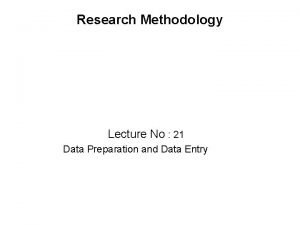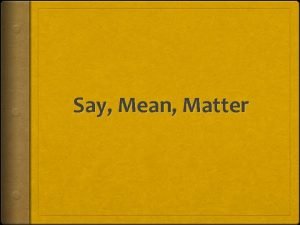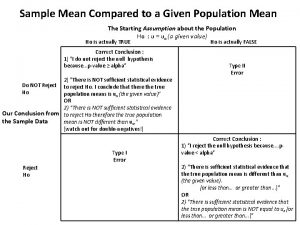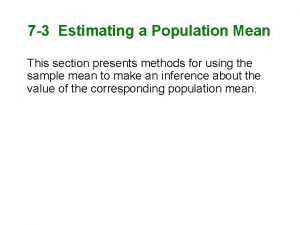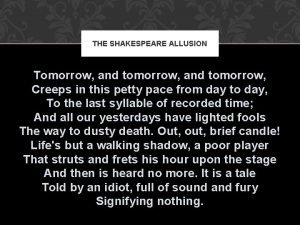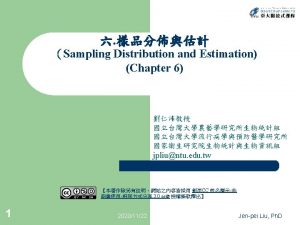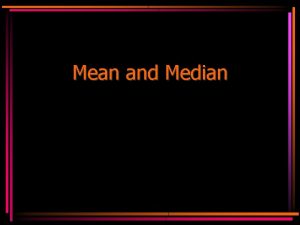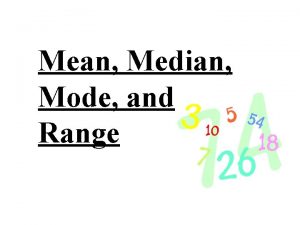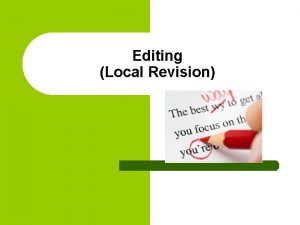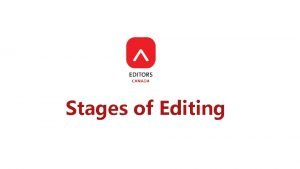Editing and Revision What does editing mean Editing











- Slides: 11

Editing and Revision

What does editing mean? • Editing is the process of looking at the whole paper in order to note its overall content, organization, and other major issues that make the paper an effective one. What does revising mean? • Revising is when you rewrite or alter your work.

What’s Involved in Editing and Revising? • Looking at grammar and the overall content of your work. • Ensures that the final draft is suited appropriately for the audience and assignment. • Helps correct grammar and organize sentences in an essay. • Helps organize and improve the final draft of your essay • Allows the writer to go back and make sure all of their ideas are correctly explained in the correct context.

Steps to take when editing and revising: • The steps taken in editing and revising may take some time, but will greatly benefit your quality of work in the long run. These steps will help to make sure that your work is being read how it is intended to be. These steps will make your work more presentable and better fit its purpose. • There are five essential steps when editing and revising

Step one: Print out your paper • After printing out your paper, go through it with a colored pen. This will allow you to find punctuation errors and misspelled words on your own so that you are not simply relying on your spell check, because even the computer does not always correct these things on its own. Making marks with your pen will make it easier for you to go back and change these issues.

Step two: Check your sentence structure • Make sure that every sentence in your paper has a subject and a verb in it. Start reading your paper out loud to yourself, and make sure there are no run-on sentences. Sometimes long sentences need to be broken up into shorter ones to make your idea more clear. • Check the beginning of your sentences and make sure you are not repeating yourself with “I”, “you”, or “the”. This step allows you to realize if you need to switch your wording or sentence structure to better get your point across and keep a good rhythm throughout the entire essay.

Step three: Avoid too much clutter • If there is too much clutter (unnecessary information) in your writing the reader will become confused and lose track of what the purpose of the work is. Get to the point of what you are trying to say.

Step four: Make sure you are writing convincingly and compellingly • Try and avoid using passive sentences in your writing. If your writing is too passive the reader will find it weak and unconvincing. Example: The television that was located in the classroom was tuned to MTV all day. Revision: The classroom television was always tuned to MTV.

Step five: Proofreading • Now that you have made edits and revisions your writing will be more clear. This step is where you want to check for typos, misspelled words, and misplaced commas. This is your final pass through of your essay to catch any last things that need to be fixed.

Strategies involved in Editing and Revising. • Reading aloud. • Walking away from the reading and returning with fresh eyes and thoughts. • Asking others to read the material and give an objective opinion.

Works Cited "Editing and Proofreading. " The Writing Center at University of North Carolina at Chapel Hill, n. d. Web. 14 March 2012. URL: http: //writingcenter. unc. edu/resources/handouts-demos/citation/editing-and-proofreading "Reading Aloud. " The Writing Center at University of North Carolina at Chapel Hill, n. d. Web. 14 March 2012. URL: http: //writingcenter. unc. edu/resources/handoutsdemos/writing-the-paper/reading-aloud "Revising Drafts. " The Writing Center at University of North Carolina at Chapel Hill, n. d. Web. 14 March 2012. URL: http: //writingcenter. unc. edu/resources/handoutsdemos/writing-the-paper/revising-drafts Dutwin, M. A. , Phyllis & Diamond, M. A. , Harriet. (2000) “Writing: The Easy Way. ” Edit and Rewrite: Chapter 11 (180 -191). Westfield, New Jersey. Sorenson, S. (2002) “How to Write Research Papers: Easy-to-follow, practical instruction for high school and college students. ” Drafting the Paper: Chapter 6 Step 11: Revising. Polishing the Content (41 -45). Arco, Thomas Learning, Inc. 3 rd ed. , Lawrenceville, NJ.
 Central editing in research methodology
Central editing in research methodology Passive revision
Passive revision Revision vs editing
Revision vs editing Linear and nonlinear editing
Linear and nonlinear editing Mad math definition
Mad math definition What does mean mean
What does mean mean Say mean matter example
Say mean matter example Mean of population vs sample
Mean of population vs sample Mean of sampling distribution
Mean of sampling distribution How to get population mean
How to get population mean Tomorrow and tomorrow creeps in this petty pace
Tomorrow and tomorrow creeps in this petty pace Mean of the sampling distribution of the sample mean
Mean of the sampling distribution of the sample mean
